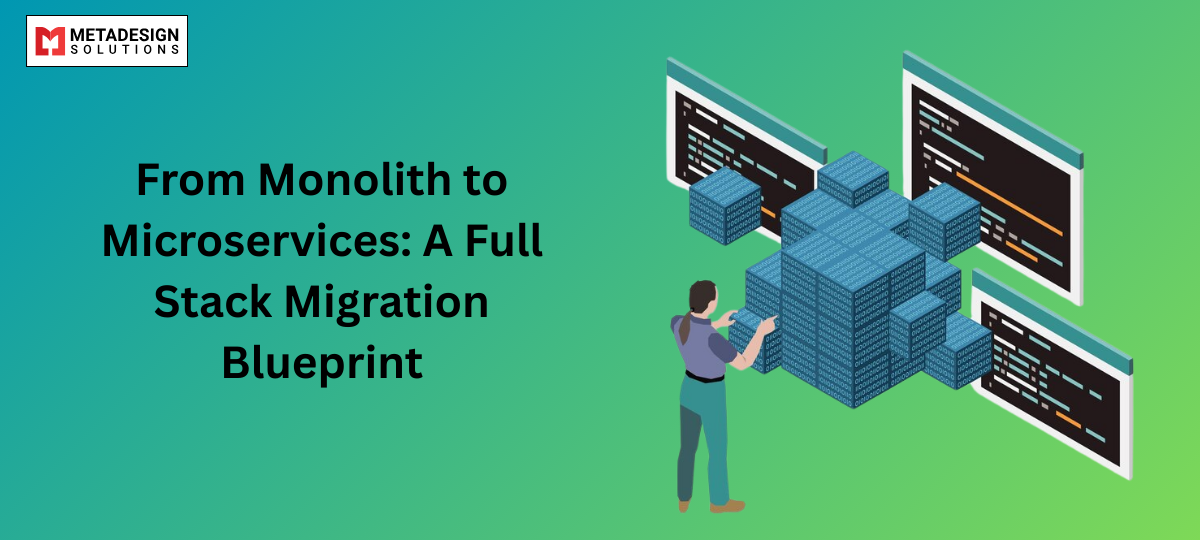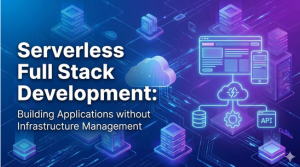In the evolving landscape of software development, organizations are increasingly shifting from monolithic architectures to microservices to achieve greater scalability, flexibility, and maintainability. This comprehensive guide outlines a strategic blueprint for migrating from a monolithic system to a microservices architecture, highlighting key considerations, methodologies, and best practices to ensure a successful transition.
Understanding Monolithic and Microservices Architectures
Monolithic Architecture
A monolithic architecture is a traditional model where all components of an application are integrated into a single, self-contained unit. While this approach simplifies initial development and deployment, it often leads to challenges as the application scales:
- Tight Coupling: Components are interconnected, making it difficult to isolate and update individual parts.
- Scalability Limitations: Scaling requires replicating the entire application, which can be resource-intensive.
- Reduced Agility: Implementing new features or technologies is cumbersome due to the intertwined nature of the codebase.
Microservices Architecture
Microservices architecture decomposes an application into a collection of small, independent services, each responsible for specific business functionalities. This modular approach offers several advantages:
- Independent Deployment: Services can be developed, deployed, and scaled independently, enhancing agility.
- Technological Diversity: Teams can choose the most suitable technology stack for each service
- Enhanced Maintainability: Smaller codebases are easier to manage, test, and understand.
Optimize Your Full Stack Development
Want to streamline your development process and deployment cycles? Connect with MDS to implement a full-stack microservices strategy for your organization.
Assessing the Need for Migration
Before embarking on the migration journey, it’s crucial to evaluate whether transitioning to microservices aligns with your organization’s goals. Consider the following factors:- Complexity of Business Domain: Complex domains with distinct functionalities can benefit from modularization.
- Scalability Requirements: Applications experiencing performance bottlenecks may require the scalability that microservices offer.
- Development Velocity: If deploying new features is slow due to a cumbersome codebase, microservices can enhance agility.
Strategic Planning for Migration
A well-structured plan is essential for a successful migration. Key steps include:- Identify Logical Components: Break down the monolith into distinct functional areas or modules.
- Analyze Dependencies: Map out interactions between components to understand coupling and data flow.
- Define Microservice Boundaries: Establish clear boundaries for each microservice based on business capabilities.
- Prioritize Services for Extraction: Determine the order in which services will be extracted, often starting with less critical or loosely coupled components.
Migration Strategies
Several strategies can facilitate the migration process:Incremental Refactoring
Gradually refactor the monolithic application by extracting functionalities into microservices over time. This approach minimizes risk and allows for continuous delivery. Strangler PatternImplement new functionalities as microservices while slowly replacing parts of the monolith. Over time, the monolithic system is “strangled” by the growing microservices ecosystem.Domain-Driven Design (DDD)
Utilize DDD principles to model microservices around business domains, ensuring alignment with organizational structures and processes.Technical Considerations
Infrastructure and Deployment
Establish a robust infrastructure to support microservices, including containerization (e.g., Docker), orchestration (e.g., Kubernetes), and continuous integration/continuous deployment (CI/CD) pipelines.Data Management
Decide between a shared database or dedicated databases for each microservice. Ensure data consistency and integrity across services through appropriate patterns like event sourcing or distributed transactions.Inter-Service Communication
Choose suitable communication protocols (e.g., REST, gRPC, messaging queues) and implement service discovery mechanisms to manage interactions between microservices effectively.Security
Implement robust authentication and authorization mechanisms, such as OAuth2 and JWT, to secure inter-service communications and data access.Organizational Impact
Transitioning to microservices often necessitates organizational changes:Team Structure: Adopt cross-functional, autonomous teams responsible for individual services.- DevOps Culture: Embrace DevOps practices to enhance collaboration between development and operations, fostering a culture of continuous improvement.
- Skill Development: Invest in training to equip teams with the necessary skills for developing and managing microservices.
Challenges and Mitigation Strategies
Common challenges during migration include:- Increased Complexity: Managing multiple services can lead to operational overhead. Mitigate this by implementing centralized logging, monitoring, and automated testing.
- Data Consistency: Ensuring data consistency across services is challenging. Adopt eventual consistency models and design services to handle asynchronous operations gracefully.
- Latency Issues: Inter-service communication can introduce latency. Optimize performance by minimizing synchronous calls and leveraging caching strategies.
Full Stack Considerations in Migration
When migrating from monolith to microservices, both frontend and backend layers need attention:Frontend Layer
a. Adopt Micro Frontends
Just like backends are broken into services, frontends can be split into independently deployable micro frontends. Each frontend can be owned by a team and tied to a backend microservice.b. API Gateway Integration
Expose a unified API layer via a gateway (e.g., Azure API Management, Kong, or AWS API Gateway) to aggregate multiple service responses and streamline client interactions.c. Authentication and State Management
Centralize user authentication (e.g., via OAuth2/OpenID Connect), and manage global app state carefully to avoid tight coupling.Tooling and Technology Stack
Choosing the right tools is essential to support a scalable microservices architecture. Here’s a full-stack technology stack you can use:Backend
- Languages: .NET 8, Node.js, Java, Go
- Service Frameworks: ASP.NET Core Minimal APIs, Express.js, Spring Boot
- Databases: PostgreSQL, MongoDB, Redis (service-per-database model)
- Messaging: RabbitMQ, Apache Kafka (for async communication)
- API Gateways: Azure API Management, NGINX, Kong
Frontend
- Frameworks: React (with Module Federation), Angular, Vue.js
- State Management: Redux, Zustand, Recoil
- Auth: Auth0, Firebase, Azure AD B2C
Infrastructure
- Containers: Docker
- Orchestration: Kubernetes (AKS, EKS, GKE)
- CI/CD: GitHub Actions, GitLab CI, Azure DevOps Pipelines
- Monitoring: Prometheus, Grafana, Jaeger, Azure Monitor
- Logging: ELK stack, Loki, Azure Log Analytics
DevOps and CI/CD Strategy
A smooth migration depends on automated pipelines and strong DevOps foundations.1. CI/CD Pipelines per Microservice
Each microservice should have its own pipeline:- Build and test upon pull request
- Push Docker image to registry
- Deploy using Helm or Terraform
- Rollback automatically on failure
2. Canary Deployments & Feature Flags
Use canary deployments to release changes incrementally. Tools like LaunchDarkly or Azure Feature Manager can toggle features safely during migration.3. Observability
Ensure visibility across your distributed system with:- Tracing (OpenTelemetry, Jaeger)
- Centralized Logs (Elastic Stack, Azure Monitor)
- Dashboards (Grafana)
Security in Microservices Architecture
Migrating to microservices introduces new security concerns.Key Measures:
- Service-to-service authentication: Mutual TLS, OAuth2 tokens
- API security: Rate limiting, IP whitelisting, schema validation
- Secrets management: HashiCorp Vault, Azure Key Vault
- Least privilege access: Apply RBAC at every service level
Best Practices Summary
| Aspect | Best Practice |
| Planning | Define domains using DDD, start with loosely coupled services |
| Architecture | Use API Gateway, maintain bounded contexts |
| Deployment | Use Docker & Kubernetes with Helm charts |
| Monitoring | Implement end-to-end observability from Day 1 |
| Team Structure | Organize around services (cross-functional teams) |
| Communication | Prefer async messaging for better fault tolerance |
Final Thoughts: Are Microservices the Right Fit?
Not every system needs microservices. Here’s when not to adopt them:- If you have a small team or early-stage product
- If you lack DevOps maturity or observability tooling
- If your monolith is not limiting scalability or team velocity
Conclusion
Migrating from a monolithic architecture to microservices is a transformative journey. It requires more than just code changes—it demands cultural shifts, new tooling, and careful strategic planning.This full-stack migration blueprint has walked you through:- Core differences between monoliths and microservices
- Strategies for incremental, low-risk migration
- Frontend and backend separation
- Infrastructure, DevOps, and security tooling
- Real-world case studies and industry insights
Related Hashtags:
#Microservices #MonolithMigration #FullStackDevelopment #SoftwareArchitecture #CloudNative #DevOps #Docker #Kubernetes #Scalability #CICDPipeline #MicroservicesBlueprint #DomainDrivenDesign #DDD #APIManagement



